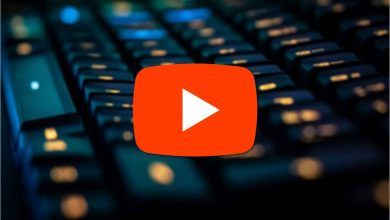
What Is YouTube Automation? Beginner’s Guide to Passive Income on YouTube
YouTube automation has become a popular buzzword among digital entrepreneurs and creators looking to earn passive income. The idea of making money from YouTube without showing your face—or even producing every piece of content yourself—sounds appealing. But how does it really work, and is it as effortless as it sounds?
This guide breaks down what YouTube automation is, how it works, what you need to get started, and whether it can truly generate passive income in 2025 and beyond.
What Is YouTube Automation?
YouTube automation refers to the process of building and running YouTube channels by outsourcing or automating parts of the content creation workflow. Instead of personally handling everything—from scripting to editing—creators delegate tasks to freelancers, AI tools, or production teams.
The goal is to streamline video production and scale faster, freeing up your time to focus on strategy and growth. In short, it’s like running a digital media business where you manage the process but don’t necessarily appear on camera or edit every clip.
However, “automation” doesn’t mean “hands-free.” You’ll still need to research, plan, and oversee your channel to ensure consistent quality and compliance with YouTube’s policies.
How YouTube Automation Works
YouTube automation operates through a repeatable workflow. Here’s how most successful automated channels are built:
1. Niche Selection
Choosing the right niche is the foundation. Look for topics with consistent viewer interest—like personal finance, tech reviews, history, or educational explainers. Evergreen content performs best because it attracts views over time.
2. Scriptwriting
You can hire freelance scriptwriters or use AI tools like ChatGPT or Jasper to generate scripts. Ensure the tone fits your audience and adds value beyond what’s already available online.
3. Voiceover and Video Creation
Voiceovers can be done by professionals or generated using realistic AI voice tools such as ElevenLabs. For visuals, video editors combine stock footage, animations, or images to produce engaging videos. Tools like Pictory or Descript simplify this process.
4. Uploading and Optimization
Once your video is ready, it’s uploaded with an SEO-optimized title, description, and thumbnail. Using keyword research tools like TubeBuddy or VidIQ helps your content reach the right audience.
5. Monetization and Analytics
After reaching YouTube’s Partner Program requirements (1,000 subscribers and 4,000 watch hours), your channel becomes eligible for ad revenue. You can also earn from sponsorships, affiliate links, and digital products.
The Business Model Behind YouTube Automation
Automated channels earn money through several income streams:
- AdSense: Revenue from YouTube ads shown on your videos.
- Affiliate Marketing: Promoting products and earning commissions on sales.
- Brand Sponsorships: Companies pay for product mentions or integrations.
- Digital Products: Selling courses, templates, or eBooks.
To start, you’ll need some upfront investment for writers, editors, or voiceover artists. Many creators treat YouTube automation as a legitimate business—hiring teams, analyzing performance metrics, and reinvesting profits to scale.
Compared to traditional content creation, the ROI can be significant if managed well. However, results depend on consistency, niche competitiveness, and video quality.
Pros and Cons of YouTube Automation
| Pros | Cons |
|---|---|
|
|
Common Myths About YouTube Automation
- Myth #1: It’s fully automated and requires no work.
Reality: You still need to plan, manage, and optimize content regularly. - Myth #2: You can make money instantly.
Reality: It often takes months of consistency to build momentum and meet monetization requirements. - Myth #3: YouTube allows any automated content.
Reality: YouTube prohibits repetitive, low-quality, or AI-generated videos without human input.
How to Start a YouTube Automation Channel (Step-by-Step)
- Pick a Profitable Niche: Focus on evergreen topics with steady demand.
- Research Competitors: Study top-performing channels to understand what works.
- Build a Team: Hire freelancers for scripting, voiceovers, and editing.
- Create a Content Plan: Schedule uploads and maintain consistency.
- Optimize for SEO: Use keywords, catchy thumbnails, and clear CTAs.
- Track Performance: Analyze watch time, click-through rate, and audience retention.
- Scale Up: Reinvest profits into better production or new channels.
Tools and Resources for YouTube Automation
- Content Creation: ChatGPT, Jasper, Copy.ai
- Video Editing: Pictory, Descript, Adobe Premiere Pro
- Voiceovers: ElevenLabs, Murf.ai, Play.ht
- Channel Optimization: TubeBuddy, VidIQ, Notion for workflow tracking
These tools streamline your workflow and help maintain quality without needing a large team.
Legal and Ethical Considerations
Copyright compliance is critical. Always use royalty-free stock footage, licensed music, or your own visuals. Avoid re-uploading or repurposing videos from other channels without permission. YouTube may demonetize or suspend your account for reused or AI-generated content that lacks originality.
Be transparent about sponsored content and ensure your videos follow YouTube’s community and monetization guidelines.
Examples of Successful YouTube Automation Channels

Some popular niches for automated channels include:
- Top 10 and list-based videos
- Motivational or educational content
- Finance and investing explainers
- Tech and gadget summaries
While many of these channels remain anonymous, they often follow the same formula: consistent uploads, engaging visuals, and data-driven optimization.
How Much You Can Realistically Earn
Income varies based on niche, watch time, and CPM (cost per thousand views). For instance:
- Entertainment channels: $1–$3 per 1,000 views
- Finance or tech channels: $10–$25 per 1,000 views
A small channel averaging 100,000 views per month could earn $500–$2,000, while larger channels can generate five figures monthly. Keep in mind that growth takes time—usually 6–12 months of consistent posting before substantial results appear.
Final Thoughts
YouTube automation is not a magic shortcut, but it’s a legitimate business model when done correctly. It combines creativity, delegation, and strategy to build digital assets that can earn long-term revenue. If you’re serious about starting, focus on quality, consistency, and compliance with YouTube’s rules.
Think of it less as “automation” and more as building a small production company that works for you—even while you sleep.
Related Topic: Right Wine Yeast for Your Grapes
FAQs
1. Is YouTube automation legal?
Yes, it’s legal as long as the content is original and complies with YouTube’s monetization and copyright rules.
2. Can I start YouTube automation with no money?
You can start small using free tools, but scaling typically requires investment in editing, voiceovers, or freelancers.
3. How long does it take to make money?
Most channels take 6–12 months to meet monetization requirements, depending on consistency and niche demand.
4. Do automated channels get monetized?
Yes, but only if the content provides genuine value. YouTube rejects reused or AI-generated content with little human input.
5. Is YouTube automation still profitable in 2025?
Absolutely. With the right strategy and niche, automated channels continue to perform well, especially in educational and evergreen categories.






